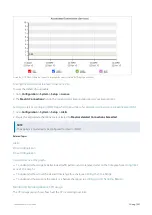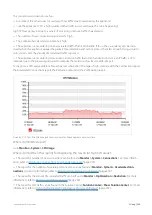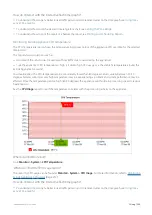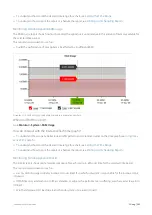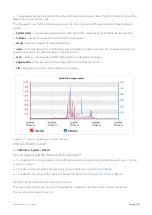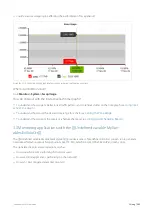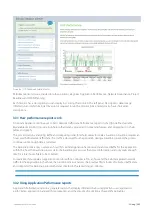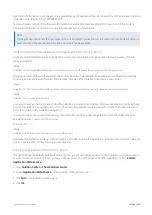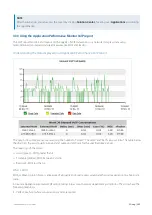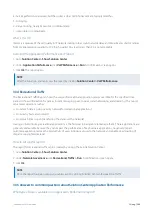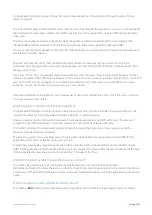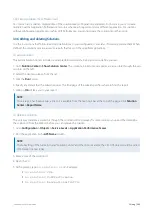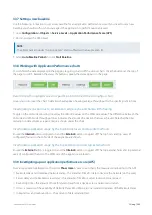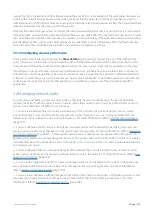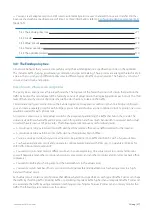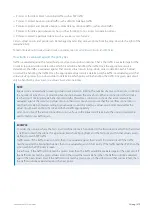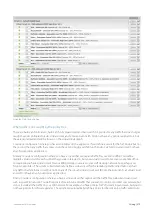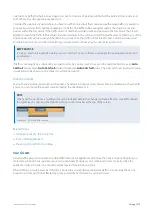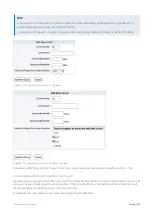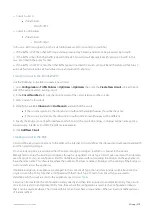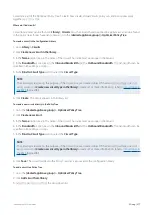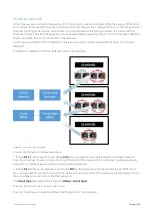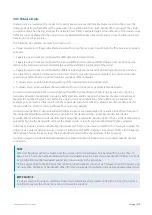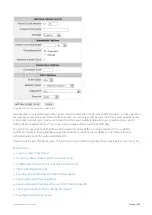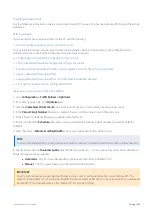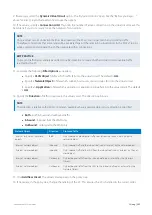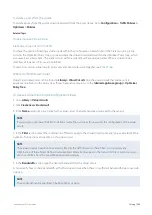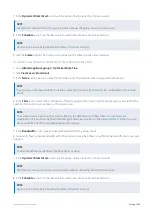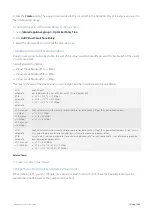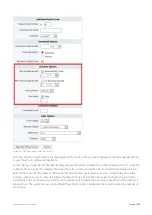
Exinda Network Orchestrator
3 Using
|
271
You can create adaptive response limit rules to automatically restrict a user’s bandwidth once a set transfer limit has
been reached within a specified period of time.
For more information, refer to
Configuring adaptive response limits
3.4.1 The Exinda policy tree
All network behavior that you want to modify by using the Exinda Appliance is specified by policies in the optimizer.
This includes traffic shaping, prioritization, acceleration, and packet marking. These policies are arranged hierarchically in
a tree so that you can assign different policy rules to different types of traffic on your network. The hierarchy consists of
circuits, virtual circuits, and policies.
Role of circuits, virtual circuits, and policies
The policy tree is arranged as a three-level hierarchy. The top level of the hierarchy consists of circuits that partition the
traffic by bridge. The second level of the hierarchy consists of virtual circuits that logically partitions each circuit. The third
level of the hierarchy consists of policies that define which actions to take on the traffic.
Circuits relate to physical connections to the Exinda Appliance. For appliances with more than one bridge configured,
you can create a separate circuit for each bridge or you can treat all bridges as one combined circuit. Typically, one circuit
would be created for each physical link.
A circuit can contain one or more virtual circuits for the purpose of partitioning the traffic that falls in that circuit. The
virtual circuit defines what traffic will be processed in this partition and how much bandwidth it is allowed. Each virtual
circuit will have it's own set of policy rules. The following are common use cases for virtual circuits.
A circuit needs to be partitioned into traffic destined for a remote office versus traffic destined for the Internet.
A circuit needs to be partitioned into traffic destined for particular branch offices.
You are a service provider and your circuit needs to be partitioned into traffic destined for each of your customers.
You have an asymmetric circuit and you want to control absolute bandwidth limits (e.g. To guarantee 100 kbps for
VoIP traffic inbound and outbound).
You want to control and monitor different subnets in your network (e.g. One virtual circuit to control and monitor
your wifi network, and another to control and monitor your servers, and another to control and monitor your back-office
computers.)
You want to enforce fair sharing amongst the network hosts in the virtual circuit.
You want a certain number of hosts or connections to get preferential treatment such as having access to a high-
bandwidth virtual circuit.
Each virtual circuit contains a set of policies that define what actions to perform on each type of traffic. Policies can shape
the traffic by throttling traffic, blocking traffic, or prioritizing important traffic higher than unimportant traffic. Policies can
also accelerate the traffic by using acceleration techniques or caching techniques. Policies can also merely monitor the
traffic. The following are common uses for policies.
Содержание EXNV-10063
Страница 98: ...Exinda Network Orchestrator 2 Getting started 98 6 Click New The New Virtual Hard Disk wizard opens ...
Страница 99: ...Exinda Network Orchestrator 2 Getting started 99 7 Select VHDX as the Disk Format type and click Next ...
Страница 130: ...Exinda Network Orchestrator 2 Getting started 130 Screenshot 35 The life cycle of configuration status ...
Страница 369: ...Exinda Network Orchestrator 4 Settings 369 ...
Страница 411: ...Exinda Network Orchestrator 4 Settings 411 Screenshot 168 P2P OverflowVirtualCircuit ...
Страница 420: ...Exinda Network Orchestrator 4 Settings 420 Screenshot 175 Students OverflowVirtualCircuit ...
Страница 451: ...Exinda Network Orchestrator 4 Settings 451 ...

